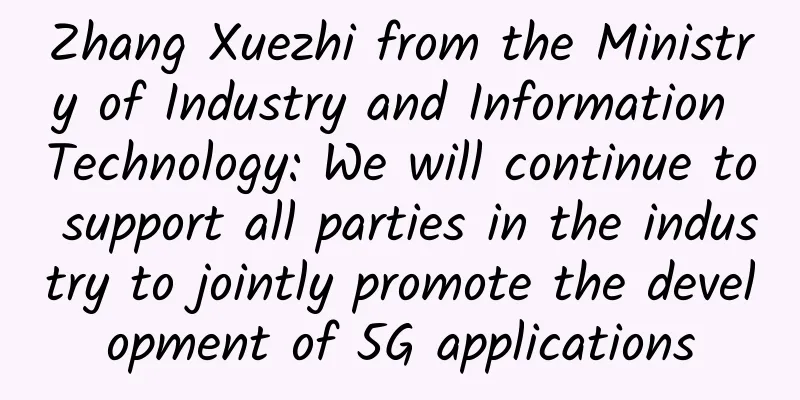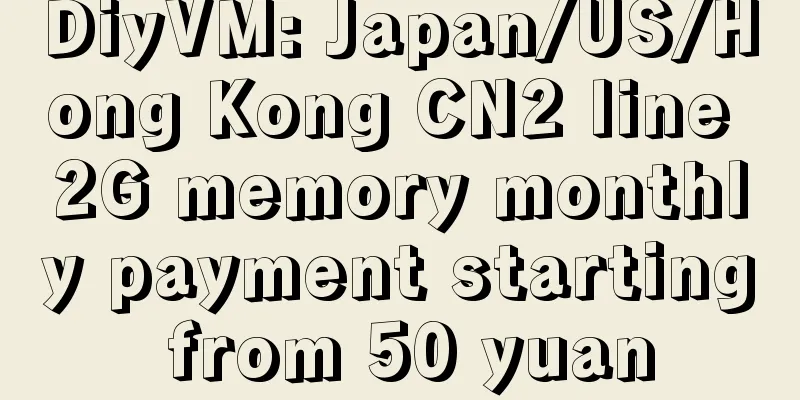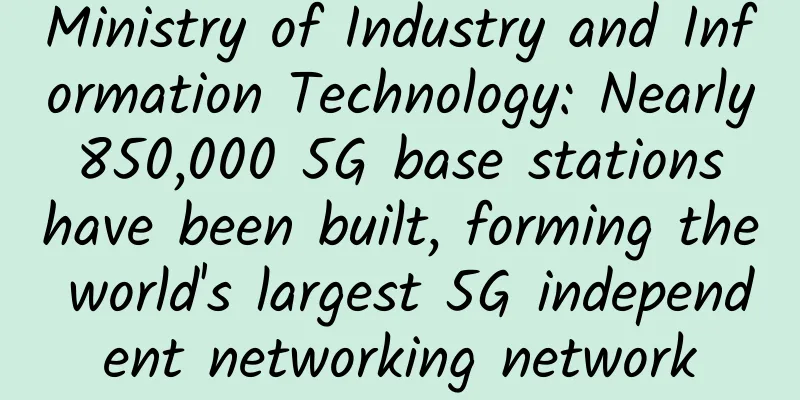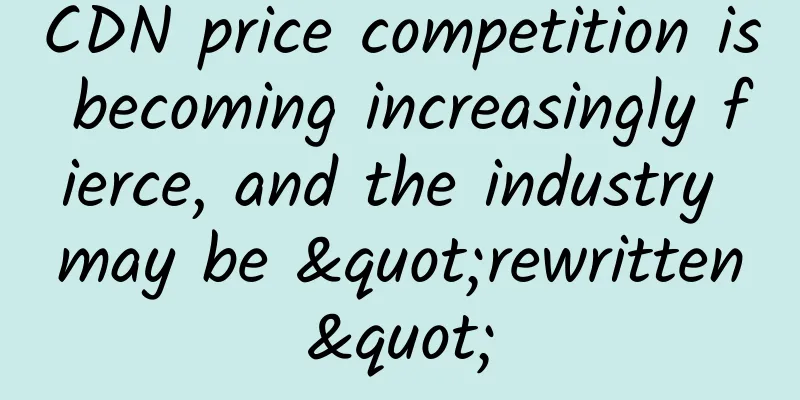Hot Topic | Why is the United States determined to "kill" Huawei?

|
"After reading the 20,000-word interview with Mr. Ren, I feel that in the long history of China, there is Yang Zhenning who can be regarded as a scientific genius, and there is Ren Zhengfei who can be regarded as a business genius." Economist Zhang Wuchang commented on Huawei Chairman Ren Zhengfei. In his eyes, this Chinese entrepreneur in his seventies is indeed worthy of the word "great." On the other side of the ocean, US President Trump, in an extremely rare public speech, stated regarding 5G and Huawei: "This is a battle that must be won!" In his eyes, Huawei is the enemy of the United States and must be "killed." Huawei, led by Ren Zhengfei, has now become the focus of global attention because of a ban. After 13 months of testing its ban on ZTE, the US government no longer concealed its intention and directly stabbed Huawei. The intensity and severity of the ban are unprecedented. Targeting Huawei as 5G is approaching is an unexpected but reasonable choice for the United States. The country is using all its national strength to attack a company, and this happened in the country that pioneered globalization and free trade. Is the United States becoming "unconfident" or is 5G technology too important? Behind this is the fact that it took China 40 years to achieve the rise of communication technology, from having no experience in 1G, to following in 2G, catching up in 3G, keeping pace with 4G, and now leading in 5G. Huawei has made great contributions. First-rate companies set standards, second-rate companies build brands, and third-rate companies make products. Today, Huawei accounts for 20% of the number of 5G standards in 3GPP worldwide, making it the only manufacturer in the industry that can provide a full range of 5G end-to-end product solutions - it will largely determine global standards. As the world's largest telecommunications network solution provider, the world's second largest telecommunications base station equipment provider, and one of the top three mobile phone manufacturers in the world in terms of shipments, the powerful Huawei has become one of the few competitors in the high-tech field in the history of the United States, causing the United States, which has always advocated a free market economy, to impose sanctions on it despite the label of "abuse of domestic laws." In the name of safety, they will do anything. "Food shortage" On May 15, US President Trump signed an executive order declaring that the threat posed by foreign competitors to US information and communications technology has placed the United States in a state of emergency. Trump's executive order invokes the International Emergency Economic Powers Act (IEEPA), which authorizes the president to regulate commerce when the U.S. economy is threatened. It is under this act that Trump gave the U.S. Secretary of Commerce the power to veto information and communications technology or services involving other countries. There is no doubt that the so-called "foreign competitors" are Huawei. The IEEPA Act cited by Trump is a "young" law that came into effect in December 1977. It first came into effect when President Carter authorized the freezing of assets of governments or foreign citizens of relevant countries by executive order to deal with the Iranian hostage crisis. After the "911 incident", President Bush Jr. also authorized the Treasury Department to obtain financial transactions and capital flow information related to terrorist activities under IEEPA. Although it is a business control bill aimed at economic threats, in fact, the United States has never used IEEPA in the economic and trade frictions between the United States and Japan over steel, textiles, automobiles, semiconductors, etc. that began in the 1970s and lasted for 20 years. On the contrary, in recent years, IEEPA has been invoked more and more frequently by the US government, mostly due to war, unrest, terrorist threats, human rights violations, transnational crime and other incidents. Now, when there is no military friction between China and the United States, the United States has launched IEEPA to target a Chinese private enterprise. This move has elevated the profile of the Huawei incident. Since there is a law to follow (it must be noted that this is the domestic law of the United States and a typical logic of the strong), the US Department of Commerce immediately included Huawei and its 70 subsidiaries in the Entity List on the grounds that it was against the interests of the United States. This means that without the permission of the US Department of Commerce, US companies will not be able to supply Huawei. The “Entity List” is like a treasured sword of the United States. It is either not used or bloodshed will occur when it is used. It put ZTE into a state of shock within four days, and ultimately bought it a glimmer of hope at the cost of a fine of more than US$2 billion and ten years of supervision by the United States. The lesson of the Restoration is still before our eyes. However, for the United States, ZTE was just a practice. After 13 months, the United States finally swung its sword at Huawei, the "ultimate imaginary enemy" that had been lingering in its mind for a long time. The Entity List also has two sides of the coin. While sanctioning foreign companies, it is also a blow to American companies. This may not be obvious in the ZTE incident, but Huawei's influence determines that American companies will also pay the price for the government's decision. On the day the Entity List was released, NeoPhotonics, an optical component supplier whose 40% revenue was tied to Huawei, plunged 20.63%, the largest single-day drop in nearly four years. Lumentum, another US optical component giant, also fell by more than 11%, hitting its lowest point in six months. According to Forbes data, orders from Huawei contributed 11% of the company's revenue last year. The share prices of other semiconductor suppliers that received notice to stop supply, such as Xilinx, Intel, Qualcomm, and Broadcom, have also been affected by the sanctions. Some US media reported that if Huawei is lost, US technology companies will lose $11 billion. Obviously, for the United States, this is a blockade that hurts the enemy and hurts itself, and its impact will affect the global supply chain and even global trade. Perhaps for this reason, the US government subsequently delayed the implementation of the ban for another 90 days to give Huawei and its business partners time to upgrade their software and deal with some contractual obligations. However, it is not difficult to solve Huawei’s supply chain crisis. At present, some companies have "cut off supplies" to Huawei in accordance with the ban. Google was the first to "cut off supply" and suspend support for some of Huawei's businesses. Recently, British chip designer ARM also said that its designs contain American-origin technology, so it will also be affected by the Trump administration's ban and suspend business with Huawei. According to media reports, Qualcomm, Intel, Xilinx, Broadcom and other manufacturers are also preparing to comply with the ban and suspend business with Huawei. The impact of the ban is not only reflected on the supply side, but also affects Huawei's product sales. Microsoft Online Store and Best Buy Shopping Website have removed Huawei's digital products from their shelves. Outside the United States, Japan's three major operators have postponed the launch of Huawei's P30 series of mobile phones, and Vodafone has also suspended Huawei's 5G mobile phone reservations in the UK... Faced with such a dilemma, Ren Zhengfei expressed his understanding of American suppliers in an interview. In his view, American companies cannot fail to abide by the law. American companies and Huawei share the same fate and are both players in the market economy. "Everyone should speak for American companies. If you want to criticize, blame American politicians." According to Ren Zhengfei in an interview, some of Huawei's US suppliers have applied for approval from the US Department of Commerce. But this approval is not easy to get. If American suppliers want to supply Huawei, which is included in the Entity List, the first step is to obtain a license. The second step is to re-examine the license. After proving that the exported goods do not make a substantial contribution to China's military capabilities, they must also obtain the unanimous consent of the "End-User Review Committee" composed of the U.S. Department of Commerce, State Department, Department of Defense, Department of Energy, and Department of the Treasury before they can be removed from the list. In other words, lifting the ban requires passing two hurdles, one economic review and one political review. It seems that the "Entity List" is not unbreakable, but it is full of the "subjective will" of the US government. Whether Huawei poses a threat depends entirely on "a single thought." Challenge In fact, Huawei has been preparing for rainy days. As early as seven years ago, Ren Zhengfei had "previewed" today's situation. Perhaps it is in this sense that Zhang Wuchang calls Ren Zhengfei "great." "If they suddenly cut off our food supply, and I can no longer use the Android system or chips, will we be in trouble?" In order to prepare for this possible crisis, Ren Zhengfei established the "Noah's Ark Laboratory" in 2012, which is specifically responsible for innovative basic research. In the Bible, the story of Noah's Ark is only about surviving the "end of the world" and saving mankind. With Huawei's rapid growth, the competition has become increasingly intense. In fact, Huawei has been preparing for the competition since the second half of 2018. First, Huawei relaxed the certification review of suppliers to cope with the increase in shipments. For key components, Huawei prepared stocks in advance, extending the inventory cycle from half a year to two years; internally, it increased investment in HiSilicon and has achieved a 70% chip self-sufficiency rate in the mobile phone field. In addition, Huawei has also put forward local layout requirements for some suppliers. According to the Nihon Keizai Shimbun, Huawei has negotiated with TSMC to transfer part of its chip production to TSMC's Nanjing factory to provide it with 10nm process chips. However, Ren Zhengfei did not think that the United States would take action against Huawei so quickly. "At the beginning of the year, I judged that this incident might happen in two years, because the United States would not strike us until the courts in the United States and our country made a ruling." On December 1, 2018, the Meng Wanzhou incident brought Huawei's crisis forward. When the incident occurred, Meng was not only Ren Zhengfei's daughter, but also Huawei's vice chairman. During the Spring Festival of 2019, Huawei began to race against time. Many employees did not even go home for the Spring Festival and slept on the floor to work overtime. While Chinese consumers were proud of Huawei's 5G breakthrough on the Internet, Huawei was surrounded by a huge sense of crisis and began to rush to build bunkers for "targeted strikes" that might occur at any time. Now that the United States has included Huawei in the Entity List, Huawei’s “supply cut” crisis has officially broken out, and Huawei must face it head-on. The vanguard of the breakthrough came from the semiconductor field, which was hit hardest, and Huawei's general "HiSilicon". The day after the executive order was issued, HiSilicon President He Tingbo raised the flag of war in an internal letter. In the letter, He Tingbo recalled that in order to cope with the possible US technology blockade, Huawei had made preparations for extreme survival many years ago. "Thousands of HiSilicon children have embarked on the most tragic long march in the history of science and technology to build a 'spare tire' for the company's survival. For thousands of days and nights, we have worked day and night and made arduous progress. As we gradually get out of confusion and see hope, we can't help but feel a little lost and unwilling, worrying that many chips will never be used and become spare tires that are always pressed in the safe." Today, the extreme survival that was once assumed has become a reality, and all the "spare tires" created by HiSilicon have become regular overnight. "Years of hard work and efforts have turned the tide and ensured the strategic security and continuous supply of most of the company's products." Ren Zhengfei thought He Tingbo was too high-profile and not conducive to solving the problem. "Don't shout slogans blindly. We are just a company." The rise of HiSilicon can be traced, which confirms Ren Zhengfei's principle of "not shouting slogans". As the person at the helm, Ren Zhengfei has always been aware of the crisis. After the millennium, Huawei's road was not smooth. ZTE and UTStarcom quickly approached Huawei by relying on their investment in the PHS business. In order to avoid the trap of "opportunists", Ren Zhengfei vetoed the PHS plan and invested heavily in 3G, which had not yet been commercialized in the world. It was this decision that put Huawei on the ground at the time. The huge R&D investment caused Huawei to suffer its first loss in 2002. Huawei, which had no wireless output and invested heavily in 3G, had a very difficult time in the domestic market because it relied entirely on wired networks. At the end of 2002, Huawei sent its best and brightest to overseas markets, taking the first step in Huawei's wireless expansion. Looking back now, it was the 3G business, which seemed unlikely to be profitable in the short term, that laid the foundation for Huawei's current competitiveness. By the end of 2003, Huawei's total revenue reached 31.7 billion yuan, leaving behind competitors such as ZTE. The short-lived PHS and UTStarcom have now disappeared from people's sight. Huawei, which was struggling to survive, began to free up its hands to develop new businesses. In 2004, Huawei separated the Huawei Integrated Circuit Design Center, which was established in 1991, into a wholly-owned subsidiary, named HiSilicon, focusing on semiconductor business. During the period when HiSilicon was founded, CDMA was at its peak. However, technical barriers and Qualcomm's high patent fees still gave GSM market space. MediaTek launched a "turnkey-solution" for GSM, which allows any manufacturer to produce mobile phones as long as they install a screen and a battery. Faced with huge profits, various workshops in Shenzhen Huaqiangbei began to produce copycat phones, triggering a surge in demand for mobile devices in the Chinese market. Amid the crazy trend of copycat phones, Huawei not only produced customized phones for European operators overseas, but also started the development of TURNKEY solutions for GSM smartphones in 2006. It takes ten years to sit on the bench. The difficulty of making chips is beyond imagination. When HiSilicon was first established, it invested $400 million in chip research and development every year. It was not until 2009 that HiSilicon produced a TURNKEY solution for low-end GSM smartphones, equipped with its first processor K3V1 developed by HiSilicon, using the backward 110nm process and Windows mobile operating system. This is a processor that even Huawei’s own mobile phones are reluctant to use, which shows how poor its performance is. The separation of terminals and chips made Huawei realize that it could not simply copy the MediaTek model. Huawei has its own terminals, so it should organically combine chips and terminals. In 2012, Huawei released K3V2, which uses ARM architecture, 40nm process and Android operating system, and installed it on its Huawei D1 quad-core mobile phone. Today, the British company ARM has long become an intellectual property (IP) provider that cannot be bypassed by smartphones around the world, and has undisputedly monopolized this market. Compared with K3V1, K3V2 has become much more mature, but it is still not at the same level as Qualcomm's flagship processor of the same period. The severe heat generation makes the Huawei D1 phone nicknamed "hand warmer". The iteration of chips cannot keep up with the iteration of mobile phones. The next two generations of Huawei mobile phones continued to use the K3V2 chip. It is not difficult to imagine that the endings of the D2 and D3 mobile phones were both "miserable". "It doesn't matter if we do things slowly or poorly. As long as there is time, HiSilicon will have its day." Under the leadership of He Tingbo, who embodies Huawei's "wolf-like" culture, HiSilicon did not lose heart, but gritted its teeth and continued to move forward. In 2014, HiSilicon launched its self-developed quad-core processor Kirin 910. In Q3 of that year, HiSilicon took a big step forward and launched the octa-core processor Kirin 925, which integrated the application processor and baseband chip into a SoC chip, greatly reduced power consumption, and improved the GPU graphics processing unit, allowing HiSilicon to successfully approach Qualcomm. With a large screen, stability and long battery life, Huawei's first high-end model Mate 7 equipped with this chip has become the pride of domestic products and is deeply loved by "successful people" from the military, government and business circles. Kirin chips and Huawei phones have finally achieved a balance, and are no longer a burden. Lao Yao, the founder of Jiwei.com, once commented: In the past six years, Huawei phones dragged Kirin chips in the first three years, and the opposite was true in the last three years. According to data released by Huawei, Huawei's R&D investment reached 400 billion yuan in the ten years from 2008 to 2017, of which chip R&D accounted for 40%, an investment of more than 160 billion yuan. After 15 years and hundreds of billions of dollars of investment, Huawei has finally established its own place in the semiconductor field. Kirin chips have reached the top of the industry, achieving the world's most advanced 7nm process, and HiSilicon's layout has also extended to cutting-edge fields such as 5G and AI. In the 2019Q1 global semiconductor market report released by ICinsghts, HiSilicon quickly rose to the 14th place in the world with a revenue growth rate far higher than other competitors, and all of the companies ahead of it are well-established manufacturers with a long history. Facing the war, HiSilicon has become a sharp weapon for Huawei, which can attack or defend. This is also one of the important reasons why Huawei dares to fight now instead of directly "shock". In the view of Dai Hui, a former Huawei employee and veteran, the 13 months since the outbreak of the ZTE incident are enough for Huawei to prepare for this crisis. Among them, the iteration of system chips is slower, and HiSilicon can fully guarantee the security and normal use of Huawei's system chips. In addition to semiconductors, after Google "cut off supply", Huawei also launched its long-shelved self-developed operating system. The OS, which is reportedly codenamed "Project Z" and scientifically known as "Hongmeng", is about to be ready. Yu Chengdong revealed that Huawei's OS designed for next-generation technology will be available as early as this fall and at the latest next spring. This system connects mobile phones, computers, tablets, TVs, cars, smart wearables and other devices into one operating system, which is compatible with all Android applications and all Web applications. In addition to the US market, Huawei is also actively pursuing the European market. Huawei's representative to the European Union, Liu Kang, said at a press conference held in Brussels recently that Huawei is ready to "sign a no-spy agreement" with the governments and customers of European member states to ensure that its telecommunications technology is not used for espionage. He also said that Huawei understands European governments' concerns about security issues and is ready to "redouble its efforts." Previously, Huawei also established cybersecurity centers in the UK and Belgium to allow European customers to verify and authenticate Huawei equipment and demonstrate Huawei's cybersecurity practices, showing its utmost sincerity to the European market. While showing its sincerity to markets outside the United States, Huawei is also constantly accumulating alternative solutions on the supply chain side and improving its ability to control the industrial chain. Huawei is showing its sword by forming alliances and making allies under sanctions. The ultimate risk Huawei is not fighting alone; behind it is a group of rapidly growing Chinese suppliers. For many years, China's electronics industry has been in anxiety about "lack of chips and screens", but the attention paid to chips is far from enough. It was not until recent years that a group of LCD panel manufacturers represented by BOE, CSOT, and Shenzhen Tianma emerged, breaking the Korean monopoly and allowing China to gain a firm foothold in the semiconductor display field. Although Samsung still dominates the high-end OLED field, BOE has already ranked first in shipments and has begun to impact high-end screens. The breakthrough in screens has directly reduced the cost of terminal products such as smart phones, laptops, monitors, and LCD TVs, laying a solid foundation for the global marketing of "domestic products." China now has domestically produced screens, and the "chip shortage" dilemma has become more obvious. Semiconductors are a capital and technology intensive industry with huge investment, long industrial cycle and high industry concentration. In this market, the United States firmly controls high-end core technology, Samsung and Hynix of South Korea also have the production capacity of mid-to-high-end semiconductors, while mainland China and Taiwan can basically only produce mid-to-low-end chips. Although China's chip industry still has a long way to go to achieve breakthroughs, top students have already taken the lead. HiSilicon has become the representative of Chinese chips. Now in the competition for 5G chips, Huawei HiSilicon and Qualcomm have formed a situation of two strong competitors. HiSilicon has established itself, but Huawei has not carried out vertical integration of the industrial chain like Samsung. In the context of globalization, Huawei has chosen to integrate into the global supply chain system, allowing professionals to do professional things to achieve higher efficiency. As Ren Zhengfei said in an interview, in peacetime, Huawei's chip procurement is a "1+1" strategy, half from the United States and half from Huawei. "We cannot be isolated from the world. We can also make chips like American chips, but that doesn't mean we won't buy them." Today, Huawei's product lines are widely distributed. It is not only the world's largest telecommunications equipment manufacturer, but also one of the top three mobile phone manufacturers in the world. At the same time, its business also covers key nodes and technologies in multiple industry chains such as semiconductors, servers, terminals, networks and cloud platforms. As Huawei's business continues to expand, its suppliers are now spread all over the world. In the supplier list first released by Huawei in 2018, there were 92 core suppliers in total, of which 33 were American companies, topping the list with more than one-third. Mainland China ranked second with 25 suppliers, and Japan ranked third with 11 suppliers. List of Huawei Supplier Award Winners in 2018 From the distribution of suppliers, it can be seen that Huawei is highly dependent on American suppliers of chips, software, integrated circuits, optical communications, etc. For example, EDA, an essential design tool software for the IC electronics industry, has only three mature manufacturers in the world (Cadence, Mentor, and Synopsys), all of which are American companies and occupy more than 95% of the global market share. According to staff of domestic EDA manufacturers, China can only achieve partial substitution at present, while the three giants can basically do it, and each has its own strengths, forming an overall surrounding barrier. "Customers' platforms will not adopt all our products, which will involve the import and export of data. We can borrow the American format, but the premise is that they open the interface. If American companies realize the threat of Chinese companies, they will set up obstacles." The same situation also exists in other key components. Xu Tao, chief analyst at CITIC Securities, believes that the performance of American RF chips is better. If they are not adopted, the mobile phone signal receiving and sending capabilities will be weakened, affecting performance. In addition, we must also face up to the gap in performance between us and the United States in some key components such as high-frequency, high-speed and FPGA. Huawei's dependence on American suppliers does exist, but on the other side of the coin, many American companies also need Huawei very much, and Huawei is almost their largest customer and profit contributor. Nearly half of NeoPhotonic's revenue comes from Huawei, a manufacturer of fiber-optic communication parts. At the same time, Huawei is the second largest customer of optical component supplier Lumentum Holdings after Apple. China not only has Huawei, but also terminal manufacturers such as OPPO, VIVO, and Xiaomi. In an industry with high R&D costs and long R&D cycles, blocking China is equivalent to blocking 40% of the global market. Two sides of the coin, coexisting. From this perspective, close cooperation in the global industrial chain is undoubtedly the most efficient win-win model for all parties. However, although this "powerful crackdown" and the US government's ban have dealt a heavy blow to Huawei, in the long run it will also drive domestic terminal companies to work more closely with Chinese semiconductor suppliers, promote the rapid upgrading of China's semiconductor industry chain, and accelerate the pace of comprehensive localization of core components. The trend of localization can be seen in Huawei's supplier list. Among them, more than 15 of the 25 suppliers in mainland China are listed companies, including BYD, which is engaged in mobile phone assembly; Shengyi Technology, Shanghai Electric Co., Ltd., and Shenzhen South Circuit (base station PCB) that produce PCB boards; Zhongli Group, Changfei Fiber Optics, and Hengtong Optics that produce cables and optical fibers; Accelink Technologies and Huagong Technology that produce optical modules; BOE and Shenzhen Tianma that produce display panels; and companies that produce connectors and other modules, including Luxshare Precision (connectors), Goertek (acoustics), Lens Technology (front and rear covers and cameras), and O-Film (cameras, under-screen fingerprint). Depending on the business market, Huawei's hardware products are mainly divided into three categories: communication base stations and optical communication equipment (operator business), mobile phones and other consumer electronics (consumer business), and servers (enterprise business). According to the research report of Everbright Securities, the core components of communication base stations and optical communication equipment mainly include baseband processors, FPGAs, RF front-ends, AD\DA, DSPs, power devices, optical modules, etc. Among them, Huawei can supply baseband processors, and Huawei can partially supply RF front-ends and DSPs. The core components of mobile phones mainly include processors, RF front-ends, memory chips, image sensors, power management chips, displays, etc. Among them, Huawei can realize self-supply of processors and power management chips, and image sensors and displays can be replaced by domestic products. The core components of servers mainly include CPU, memory chips, etc. Like PCs, Intel and AMD's X86 CPUs basically monopolize the market. According to public information compiled by Dige.com, it can be seen that there are domestic alternatives to the imported components required for most of Huawei's product lines. However, the performance of many domestic devices cannot yet reach that of Huawei's existing "first-class" suppliers. A small number of products can only be replaced in the low-end market or in some links. Domestic substitution in Huawei's supply chain Faced with this industry status quo, Ju Long, global vice president and president of SEMI China, believes that international cooperation is necessary, "because we are too far behind in these technical fields. If we want to do everything ourselves, it will not work in the short term. Moreover, the industry cannot stop. For example, if you wait another 20 to 30 years, others will also make progress in the past 20 to 30 years. Therefore, if we want to make more advanced products, we still need to cooperate with the international community, but we can try to reduce our dependence on foreign countries." Therefore, although Huawei has launched a "backup plan", we cannot underestimate the important contribution of US suppliers to Huawei and the impact of the supply cut of key components they control. Moreover, the Entity List affects not only Huawei's China headquarters, but also all 70 subsidiaries related to Huawei. Compared with components, what is more dangerous is the cutting off of top-level intellectual property rights. The ARM supply cut is a major crisis that cuts off the upstream industry chain. If Google's Android system is cut off, Huawei can still come up with a new operating system. However, if the ARM supply cut continues, Huawei will face a cliff-like decline. In the PC era, Intel proposed the X86 architecture for PC chips, and has since almost monopolized the computer chip market. At the same time, British chip manufacturer ARM also proposed a chip architecture that is smaller and consumes less energy. However, in the PC era, the ARM architecture, which lacks performance, is of no use. With the advent of the mobile Internet era, ARM architecture has become the first choice for mobile phone chips. Today, 99% of smartphones in the world are using ARM architecture chips. Whether it is Apple A series, Qualcomm Snapdragon, Samsung Exynos or HiSilicon Kirin, their chip designs are based on the ARM instruction set, which determines how the processor processes commands. In addition, the market share of ARM architecture in in-vehicle smart hardware and wearable devices has exceeded 95% and 90% respectively. "ARM is the basis of Huawei's smartphone chip design, so this is an insurmountable obstacle for Huawei." After ARM announced the suspension of its business with Huawei, Geoff Blaber, an analyst at market research firm CCS Insight, commented. The reason why it is said to be "insurmountable" is that the previous speculation about Huawei's chip Plan B was actually based on the premise that ARM would not cut off supply to Huawei. For example, considering that Intel may follow suit and "cut off" server chips to Huawei, some commentators said that Huawei has self-developed server chips as an alternative. However, this self-developed server chip uses the ARM architecture. But we are not out of ammunition and food yet. Huawei purchased a permanent license for the ARM instruction set ARM V8 in January this year, but it is limited to the architecture of this model. Huawei can still continue to use and produce existing smartphone chips, such as Kirin 980, and some sources also said that Huawei's upcoming Kirin 985 will not be affected. At the same time, some analysts also said that Huawei may have the ability to expand the ARM architecture, define the instruction set, and then develop its own execution units and pipeline paths. ARM's influence cannot be underestimated, but ARM is by no means a god. ARM, which rose after X86 and MIPS, gradually occupied the market after seizing the opportunity of mobile networking. It was Intel's arrogance and the market gap that gave ARM the opportunity, and now ARM has become the bottom layer of chip design. From another perspective, the "exclusive" ARM is also giving opportunities to latecomers. Technology and the market complement each other: technology needs to be put to good use, and the market needs the protection of technological barriers. ARM is making room for the market, so can the technology of Chinese companies keep up? We should always take a broad view of things. We need to see that the real pain point of China's science and technology industry is what Ren Zhengfei calls basic disciplines, which often represent the most upstream and cutting-edge research and development capabilities. Whether it is industrial technology or intellectual property rights, Chinese companies still have a long way to go. In addition, ARM's supply suspension is also a very unfavorable signal for Huawei - it means that non-US companies may also stop supplying Huawei because they "include US-origin technology." On May 23, Japan's Sankei Shimbun and Reuters reported that Panasonic Japan would stop trading with Huawei, but Panasonic later denied the rumor and said it would continue to cooperate with Huawei. However, there is smoke without fire, and behind the overturn of the authoritative media reports lies the ever-changing game landscape. For example, as a foundry for major Fabless semiconductor companies in the United States, TSMC will inevitably be involved in "U.S.-origin technology". Under pressure from the U.S. government, its possible fluctuations are also a threatening mine. The most worrying situation has still happened - in the arm wrestling between the two superpowers, Huawei’s biggest crisis does not come from the targeted attacks of the US government, but from the collective encirclement of the US “circle of friends”. There is no doubt that if the ban continues, it will be a disaster for Huawei. Other people’s wisdom Brothers are there for you to overcome all the hardships. Although overcoming the hardships is difficult, it is not necessarily impossible. There is a family business that successfully broke through the technological blockade of Japanese and American companies and established its own empire - that is South Korea's Samsung. In the 1950s, the electronics industry emerged in the United States. With the outbreak of the Korean War, the United States began to transfer technology to Japan on a large scale. Between the 1960s and 1970s, the technology of Japanese products such as televisions, refrigerators, washing machines, vacuum cleaners, and radios had matured and were exported in large quantities. By 1971, the output value of Japan's electronics industry had reached US$9.45 billion, ranking second in the world. Subsequently, Japan gradually made breakthroughs in the semiconductor field. By 1985, Japanese DRAM chips had occupied about 80% of the global market share. At this time, South Korea was still lagging behind Japan in terms of economic and social development and industrial technology. It was not until the late 1960s that Samsung founder Lee Byung-chul saw opportunities in the electronics industry amid South Korea’s national industrial transformation. In January 1969, Samsung Electronics, which would later become a major player, was officially established. Lee Byung-chul thought clearly: "Taking into account the technology, labor, industrial added value, domestic demand and export prospects, electronics is the most suitable industry for Korea's current and future economic development stage." However, Samsung had no experience in producing electronic products. Lee Byung-chul, who had studied in Japan, chose to learn from advanced Japanese companies in the industry: after forming a joint venture with Sanyo Electric and NEC, Samsung sent a group of employees to various parts of Japan to learn television and vacuum tube production technology, and invested 20 million US dollars to build a large-scale electronics industrial base focusing on the research and development and production of integrated circuits and television picture tubes. At the beginning of the cooperation, Samsung mainly produced televisions for Sanyo. In November 1970, Samsung Electronics produced the first vacuum tube and the first 12-inch black-and-white TV, and three years later launched a 19-inch black-and-white TV based on transistors. In 1974, Samsung Electronics began to launch white goods such as refrigerators, air conditioners and washing machines. However, Japanese companies do not open their core technologies to Samsung. Unwilling to stop at OEM, Samsung purchased a large number of advanced products in the market and started to overcome technical difficulties by dismantling machines. Finally, in 1976, Samsung independently developed the first batch of color TVs in South Korea and exported them to Panama and other countries. Samsung had already established a relatively complete white goods production line, but its core electronic components still had to be imported. Micron Technology of the United States, Mitsubishi of Japan, Sharp and other companies were firmly in control of the leading position in the semiconductor industry. December 6, 1974, is a very important day for Samsung. Because, after seeing the huge opportunities in cutting-edge technology represented by semiconductors, Lee Byung-chul and his youngest son Lee Kun-hee invested in Hankook Semiconductor out of their own pockets despite the opposition of management. At the end of 1977, Samsung and Hankook businesses were completely merged, officially renamed Samsung Semiconductor, and integrated into Samsung Electronics in 1980. Facing Samsung's entry into the semiconductor field, the CEO of Japan's Mitsubishi directly stated, "The semiconductor industry is not suitable for South Korea, which has a low GDP level." But Lee Byung-chul didn't believe it. In early 1983, Samsung established a base in Santa Clara, California, USA, to look for licensees for DRAM (dynamic random access memory) technology and recruit semiconductor talent from the United States. However, no company is willing to open its core technology to Samsung. Sharp was polite on the surface, but in reality it was guarding everywhere, not allowing Samsung employees to approach the advanced production line, and even refusing to disclose basic factory information. Samsung employees who went to inspect and learn could only estimate the factory area by using their fingers, height, and number of steps. Lee Byung-chul was also turned down by the big brother NEC of Japan. The chairman of NEC directly refused: "I can lend you money, but I can't lend you technology." After being rejected by Hitachi, Motorola, NEC, Sharp, Texas Instruments and Toshiba, Samsung finally obtained the 64K DRAM design license from Micron. However, the process was not smooth. Micron was willing to provide Samsung with relatively backward design drawings for $4 million, but later reneged on the excuse of peeking at the documents and drove the Samsung staff out. Technological blockades often lead to unscrupulous means of breaking out. At this time, South Korea began to use its national strength to attract overseas talents to return home, and Samsung also vigorously poached people and technology from Japanese companies. Finally, at the end of 1983, Samsung successfully developed 64K DRAM chips from scratch, shocking the United States and Japan. In November 1983, Samsung took the first sample of the 64K DRAM chip - although it was still lagging behind the most advanced Japanese technology at the time for nearly five years, Samsung's breakthrough laid the foundation for it to become the world's largest memory chip manufacturer 10 years later, taking the first step to achieve an intergenerational breakthrough in Samsung semiconductors. The road to breaking through technological blockade is long. In 1984, in order to get rid of the authorization fee, the Samsung Santa Clara team reverse engineered 256K DRAM based on the 2-micron process and started production at a new factory in Qixing. A year later, Samsung also successfully achieved mass production of 64K DRAM chips. Everything seemed to be getting better and better, but Samsung encountered a "premeditated" price plunge at this time. Under the control of leading companies, the chip price fell from US$4-5 per chip to 25 cents. At that time, Samsung's production cost was US$1.3, which means that for each chip produced, it would be charged US$1. Under such a dilemma, Samsung did not shake its determination in the semiconductor field. Lee Byung-chul led Samsung Electronics to continue to invest in and build production lines and made rapid progress. The truth is that until he died of illness in 1987, Lee Byung-chul failed to see Samsung Semiconductor profit. Finally, after investing more than $500 million in 200mm wafers for five consecutive years, Samsung launched the world's first 64M DRAM in 1992, and two years later it was the first to launch 256M DRAM. In the 1990s, Samsung faced an anti-dumping lawsuit initiated by the United States. Lee Kun-hee cleverly took advantage of the opportunity of Americans to suppress the Japanese semiconductor industry and lobby for the Clinton administration: "If Samsung cannot manufacture chips normally, the trend of Japanese companies occupying the market will be more obvious, and the decrease in competitors will further increase the price of chip purchases by American companies, which will be even more unfavorable for American companies." There is no eternal enemy, only eternal interests. In the eyes of the United States at that time, Samsung was still just a latecomer and not afraid of it. In the end, Samsung was only charged an anti-dumping duty of 0.74%, while Japan was charged an anti-dumping duty of up to 100%. With one blow, Samsung officially surpassed Toshiba to become the world's largest DRAM manufacturer. US, Japan and South Korea semiconductor share trend chart In the panel field, Samsung also has a story about "silence and tears of men and women". In the early 1990s, Samsung took advantage of the trough of the LCD industry, but instead made progress, and invested heavily in expanding production lines, hiring large numbers of unemployed Japanese engineers. From 1990 to 1994, it lost 100 million US dollars a year to build a panel production line. In 1995, Samsung went against the trend and built the first third-generation line to level up Japan's production capacity. It was about to survive, but it encountered the Asian financial crisis. During this period, Samsung was deeply involved in a debt crisis and had to cut off many businesses. Only LCD panels were not cut off, but instead invested billions of dollars. In 1998, Samsung built the 3.5-generation line, and the panel shipments reached the world's first place, and the second place was another Korean company, LG, which achieved a comprehensive overtake of Japan. In the short term, the market value of Samsung surpassed Japan's Sony in 2002. Samsung Electronics replaced Intel as the world's largest semiconductor company in 2017, ending the latter's dominance for 25 years and maintaining its position as the largest mobile phone manufacturer worldwide. The stones from other mountains can be used to attack jade. For Huawei, the crisis facing now is somewhat similar to Samsung's previous dilemma. Samsung's breakthrough can provide Huawei with indirect experience that is quite instructive. What’s more interesting is that today’s Huawei is far better than the former Three Stars in various dimensions such as corporate strength, R&D capabilities, and global industrial chain deployment. Strictly speaking, it is easy to shake the mountain and is difficult to shake Huawei. The United States faces difficulties. Overcoming the Tribulation Of course, Huawei today is also more dangerous than Samsung. It is facing the US government that is determined to "strangle" it, and its strangle intensity, intensity and speed are far greater than the equivalent of the US strangle Japanese semiconductors in the past. In the mid-1980s, Japan's semiconductor industry was developing at its peak, so powerful that it forced Intel to withdraw from its DRAM storage business. Fujitsu even planned to acquire Fairchild Semiconductor, known as the living fossil of Silicon Valley. American companies are panicking. Under their lobbying, the US government was startled by the "national security theory", and swung its fist and smashed it at Japan. In the spring of 1986, Japan was considered to be dumped with read-only memory; in September, the US-Japan Semiconductor Agreement was signed, and Japan was required to open the semiconductor market to ensure that foreign companies gain 20% market share within five years; at the same time, it imposed a 100% punitive tariff on the US$300 million chip exported by Japan; and it rejected Fujitsu's acquisition of Fairchild Semiconductor. A powerful operation made the Japanese semiconductor industry's ten-year struggle a slag--DRAM's global market share fell from the highest 80% to the end of only 10%. What's ridiculous is that Japan's semiconductor industry developed in the context of industrial transfer in the United States in the 1950s. After setting a precedent, the United States became more domineering, and now facing Huawei, it has reused its usual skills. However, today is different from the past, and China is not Japan either. At that time, Japan's largest market for its semiconductor industry was the United States. With its absolute voice on the market, the US sanctions were tantamount to a "order" for Japan. Today, China is the world's largest semiconductor consumer market and has a significant influence on global semiconductor suppliers, including the United States. In addition, Chinese companies represented by Huawei are also making great strides in making global layouts, stretching their branches around the world. The huge Chinese market and the extensive globalization of Chinese companies determine that Chinese companies are by no means lambs to be slaughtered. Huawei, which has cutting-edge self-developed technologies, is one of the best. Huawei has become the number one threat in the field of 5G communication technology in the United States. In a situation where skills are inferior to people, the United States is launching not only a business competition, but also worrying about the political and economic suppression that plays a leading role behind it. This is a battle for the 5G highland. It is no exaggeration to say that the result will affect China's 5G process. 5G is the peak of the development of mobile communication technology at present. The three major application scenarios of 5G include eMBB (large-traffic mobile broadband services such as 3D/ultra-high-definition video), mMTC (large-scale Internet of Things services) and URLLC (services that require low latency and high reliability connections, such as unmanned driving and industrial automation). As the underlying network technology, 5G will become a neural network in the new generation of information age and have a huge impact on economic and social changes. It will change the industrial Internet, which is an underlying technological revolution since the industrial revolution. The reason why Huawei has been able to rush to the forefront of this key technology is due to its long-term R&D investment. In terms of 5G technology patents, Huawei is ahead of Nokia (1427) and Samsung (1316) with 1,554 patents, and is the company with the largest number of necessary 5G standard patents. Under the rules of 3GPP, 5G standardization voting is a combination of technical strength and voice. In the process of finding balance between all parties, Huawei has become the optimal solution. Holding the 5G standard not only means standing on the high ground of the profit chain and obtaining rich economic benefits (this can be referred to Google, Intel, ARM, Microsoft and other companies that are lying on the standard). More importantly, standing on the upstream of the 5G technology industry chain means autonomy in information security. Such an important lifeline is not difficult to understand. Since joining the WTO, China's manufacturing industry has joined the global supply chain system, gradually building the brand and competitiveness of China's "Great Wall Brand". However, time is too short after all. In order to catch up, Chinese companies choose to cooperate with the global industrial chain. Many technologies are not impossible to do, but they are not necessary and time to do it - global cooperation is the most efficient win-win situation. However, the United States, which has always been on the high ground of world technology and intellectual property rights, certainly does not want an important underlying technology to suddenly appear in the global division of labor, which actually comes from China's Huawei. Now, a ban from the US government wants to break the global cooperation path of Chinese companies, intending to remove the "giant's shoulders" and make Chinese companies that have finally reached a high level fall back to the foot of the mountain and lose the ability to compete with the United States. The war has been going on for three months, and letters from home have also arrived. In recent days, many foreign media have commented that referring to the development history of China's industry, if you give it time, Huawei will definitely be able to overcome difficulties and have its own production capacity in the entire industrial chain. The reality is that what Huawei today lacks is time. Obviously, this time, life and death are at stake. It has been completed. Huawei will be reborn in the ashes and greatly enhance its position, voice and control capabilities in the industrial chain. Samsung, which achieved the Battlegrounds under the technology blockade of Japan and the United States, has now become the culmination of vertical integration of the entire industrial chain. Failure will affect the development trajectory of China's high-tech technology - behind Huawei, there are more Chinese technology companies standing. On May 22, the US State Department's International Security and Non-Proliferation Bureau announced the imposition of sanctions on 13 Chinese companies and individuals, including 10 companies such as Youxiang Technology and Zhejiang Zhaochen Technology and three individuals. In addition, the US government also issued warnings to US companies for Chinese drone manufacturing companies and surveillance equipment companies, which may involve DJI, Hikvision, Zhejiang Dahua and other companies. In a great game, as the sword and shield of Chinese high-tech enterprises, Huawei cannot fall. A great task is given to heaven, and Huawei can only be reborn through the tribulation and be reborn. Wish Huawei blessing! |
>>: In the 5G era, what is the United States worried about?
Recommend
With 30,000 layoffs, what have American operators experienced?
According to public data, the scale of layoffs at...
DogYun National Day Promotion: 30% off on Elastic Cloud, 20% off on Classic Cloud, 10 yuan free for 100 yuan recharge, buy 1 month and use 2 months on dedicated server
DogYun has launched a promotion during this year&...
5G messaging accelerates commercialization and may become the first batch of 5G applications
After more than two years of construction, 5G mes...
The battle for Wi-Fi 7 is about to begin
The summer of 2022 is coming, and the person to t...
NTT and Cisco jointly attended the 2021 China CIO Alliance Annual Summit Forum
[[435879]] The China CIO Alliance (CCA) was held ...
The rapid development of 5G technology brings more innovative applications to the automotive industry
Industry experts point out that in order to meet ...
The speed of light leads the future: Hubei Sports Vocational College upgrades its all-optical network
As a sports vocational college integrating sports...
Ruishu Information is listed as a representative manufacturer in the field of online anti-fraud in Gartner's "Online Anti-Fraud Market Guide" report!
In July 2021, Gartner, a global authoritative IT ...
iWebFusion dedicated server 10% off from $44/month, 5 data centers including Aptum/Psychz in Los Angeles are available
iWebFusion (iWFHosting) recently released a 10% d...
How 5G infrastructure can support small data centers at the network edge
[[375109]] 【51CTO.com Quick Translation】5G techno...
Another major accident breaks out. How to solve the 5G network security dilemma?
The frequent outbreaks of cybersecurity incidents...
ADLINK and Wind River Systems establish joint lab to focus on remote integration and testing of NFV solutions
[51CTO.com original article] On February 16, 2017...
Six pictures to help you evolve from HTTP/0.9 to HTTP3.0
[[422169]] One day, Xiaolin went to an interview ...
Cisco appears at the 4th National Cyber Security Publicity Week, committed to building a secure "all-intelligent network"
[51CTO.com original article] In the golden autumn...
How to solve the voice delay problem after core network upgrade
picture After an operator upgraded its core netwo...









